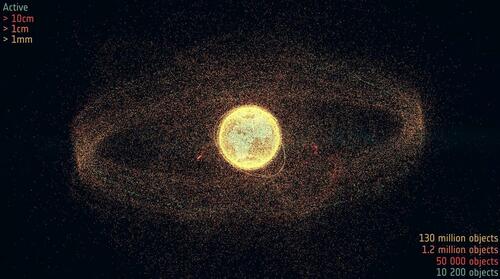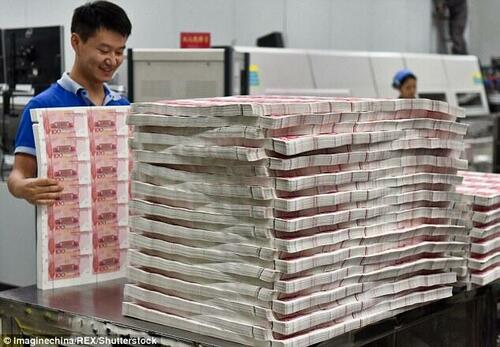
Catastrophe Looms Above: Space Junk Problem Grew 'Significantly Worse’ In 2024
As if you didn’t have enough to worry about, the risk of space junk causing a catastrophic chain reaction that profoundly affects life on Earth rose significantly in 2024, according to the latest annual analysis from the European Space Energy (ESA).
The numbers are mind-boggling. ESA estimates there are now more than 1.2 million orbiting objects larger than 1cm and more than 50,000 larger than 10cm. Of the enormous number of orbiting missiles, only 40,000 are individually tracked by surveillance networks. The number in that category rose by 8% last year. Part of that increase is attributable to the August explosion of China’s Long March 6A rocket, one of the worst junk-generating incidents in decades. “If we extrapolate current trends into the future, as before, catastrophic collision numbers could rise significantly,” the ESA report said.
 This ESA graphic depicts the mind-blowing volume of objects swirling around Earth at various levels of orbit
This ESA graphic depicts the mind-blowing volume of objects swirling around Earth at various levels of orbit Don’t judge space junk’s potential for destruction using your Earthly instincts: Traveling at tens of thousands of miles per hour in space, even a small object has the potential to inflict major damage. In one incident that demonstrates that fact of physics, a 2mm piece of space once junk put a 5cm-wide dent in a climate satellite. A modest move up the scale brings much more power: „A one-centimeter piece of debris has the energy of a hand grenade,” ESA’s Tiago Soares told DW.
In an ominous 2009 incident, a Russian Cosmos satellite collided with an Iridium satellite, creating a cloud of about 2,000 pieces of junk measuring 10cm or more. That’s brings us to the nightmare scenario that should fill you with dread: The Kessler Effect. Imagine an initial major impact that creates hundreds of shards, which then start colliding with more orbiting objects, setting off a chain reaction. Actually, you don’t need your imagination. While some scientists say it wasn’t fully accurate in depicting the physics, Hollywood ventured to depict the Kessler Effect in the 2013 movie, Gravity:
It would be enormously difficult to move forward from a catastrophe in which thousands and thousands of objects are shattered in orbit, as entire orbit zones could be rendered unusable.
In a world in which satellites play an ever-increasingly important role for humanity, the stakes are high. „We depend on satellites as a source of information for our daily life, from navigation, to telecommunications, to services, to Earth observation, including defense and security,” Josef Aschbacher, ESA’s Director General, told DW.
The enormous swarm of junk doesn’t just include small pieces of debris, but also obsolete satellites and the bodies of used rockets. Of those two types of junk, an average of more than three of them re-enter the atmosphere every day, according to the ESA’s new 2025 report. Some state actors have intentionally created thousands of shards: both Russia and India have tested anti-satellite weapons.
When will a Kessler Effect event become a substantial, ongoing plausibility? “I think we’re not there yet, but we’re approaching the situation very quickly,” said University of Arizona Earth and space scientist Vishnu Reddy. “The debate is about when it will happen, whether it is five years from now, 10 years from now or 20 years from now.”
We’d like to tell you that a cleanup has already started. Alas, the first test of a satellite-plucking mission is still three years away. The experiment will be carried out by privately-held Swiss firm, ClearSpace, with funding by ESA. Originally slated for this year, the ClearSpace-1 mission is now scheduled for 2028, targeting being just a single, suitcase-sized ESA „PROBA-1” satellite. It will be a suicide mission of sorts: An unmanned, autonomous vehicle will deploy a „space claw” to take hold of the satellite, and then guide it into the Earth’s atmosphere, where both will be incinerated on re-entry.
Driving home the urgency, planners had to pick the PROBA-1 target after their original one was — you guessed it — hit by debris.
Tyler Durden
Sat, 04/05/2025 – 08:45















